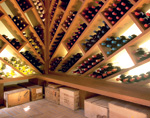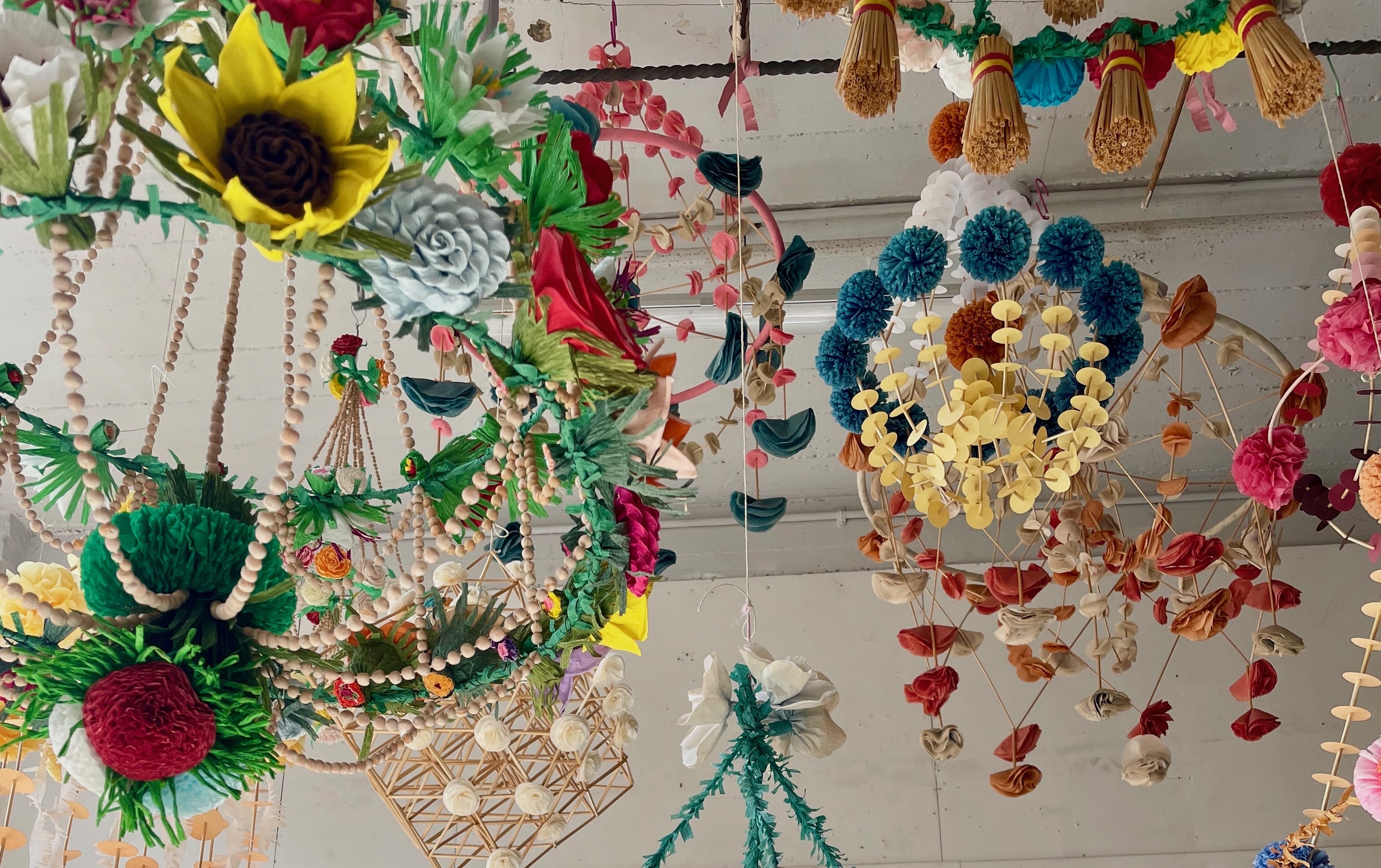Top tips for wine cellars
With good planning, a wine cellar can pay for itself. We help you select the best Bordeaux, Rioja, Burgundy and more


When 85% of wine bought in this country is consumed on the day of purchase, why should you consider establishing your own wine cellar? Most wines, and this includes richer white wines, develop character and flavour as they age and mellow and the various elements bond. There is also an optimum drinking 'window' for every wine, where each component part reaches perfect harmony. This may take decades, so, with some planning and care-ful investment, you can ensure that you are able to enjoy these wines at their optimum on a regular basis. Setting up a wine cellar doesn't have to be a compli-cated affair, and it can be very rewarding, maximising the full potential of the wine and bringing you enormous enjoyment.
So, how do you choose the wines to squirrel away for a rainy day? The first step is to decide your budget and what you want to achieve from your cellar. Is it solely for your own enjoyment or are you expecting to make some return on your investment? Jim Eustace, Buying Director of Haynes Hanson & Clark (HH&C), recommends exercising prudence. 'HH&C's expertise is in tasting and assessing the quality of young wine. We've been doing this for more than 25 years, and we're very good at it. We're totally confident, for instance, that Château Grand-Puy-Lacoste 2006 will make great drinking in 10 to 20 years, but I'm not going to make wild claims about its investment value. Wine is for drinking and enjoying, but, that said, it is possible to reach a stage where your cellar can virtually fund itself.'
Maintaining a wine cellar enables you to not only appreciate wines at their best, but also to allow you the opportunity to buy wines on first release, or en primeur as it's known. This is when wine is sold at its cheapest (see glossary). These wines enter the market at the 'bottom of the ladder' and, as they gradually climb towards their peak of drinking, they should increase in value. If you're canny about buying en primeur, and secure two or more cases of a smart claret, hang on to one case to enjoy yourself and sell the other later. The profit from such an exchange will fund future en primeur investments. For example, according to a recent market report from wine investment specialists Liv-Ex, 'Château Haut-Brion 2005 was sharply higher in May 2007 than other 2005 Bordeaux. Although the highly priced 2005 first growths are only up 20% overall, Haut-Brion one of the wines of the vintage is up 42%'.
Berry Bros & Rudd is wary of this short cellaring period, so its Sales Director, Simon Staples, recommends a holding period of five to 10 years, 'but many of our customers have done very well in a shorter period of time due to the recent strong market'. He gives two examples: 1996 Château Lafite-Rothschild, Pauillac sold for £2,400 per case in bond in September 2005, and is now selling for £7,500 per case. Similarly, 1996 Château Latour, Pauillac sold for £2,100 per case in bond in September 2005, and now is selling for £6,600 per case. Before you invest, it's worth noting that wine is exempt from Capital Gains Tax as it is classified as a wasting asset, but, as this is a bit of a grey area, proceed with caution.
The world's most coveted wines are in short supply and in huge demand, so you need realistic expectations of what's available. Some of the rarer wines will only be available to the long-term customers of leading shippers. For example, Domaine de la Romanée Conti in Burgundy (DRC) only produces about 450 cases of its mind-blowing La Rom-anée Conti, Grand Cru, making it the most coveted Pinot Noir and a sound investment. But don't expect to walk into Corney & Barrow (DRC's UK agents) tomorrow and buy a case, unless you have an existing strong relationship with the company. Oliver Hartley, Sales Director, is frank about its allocation policy. 'I have to be honest, when alloc-ating wines, we look at what people have bought over our entire portfolio over a few years. If we compare two customers both spending £30,000 with one only buying blue-chip wines such as DRC or Pétrus and the other who buys across our range, we will favour the customer who supports us in all areas.
'However, we do try to encourage younger buyers, and keep a small amount back for people who will be poten-tially good customers in years to come, although they don't have the means at present. It's not just a question of a specific minimum annual spend it's more complicated than that, although you have to spend £3,000 to £4,000 before you're offered an allocation.'It is, of course, essential to find a wine merchant that you can build a relationship with. 'Creating cellars for customers is something that requires a lot of thought and as much interaction as possible. We get information about the client's tastes and preferences, and come up with a carefully planned proposal,' says Tom Stopford-Sackville, Managing Director at Goedhuis & Co, which has strong ties with Bordeaux and Burgundy.
Having decided on your wine and budget, where do you store the wine? 'Correct storage is vital for bringing the wine to perfect maturity,' emphasises Mr Eustace. Wine needs to be stored at a constant temperature (wild fluctuations prematurely mature wine). The ideal temperature at which to store wine is 7˚ to 15˚C. Bright light and direct sunlight should be avoided at all costs, bottles should be stored horizontally, and a cellar needs approximately 75% hum-idity, which prevents evaporation and the corks drying out. Bottles must be kept still as vibration upsets the sediment, and, as wine can absorb pungent odours through its cork, a neutral environment is also crucial.
Sign up for the Country Life Newsletter
Exquisite houses, the beauty of Nature, and how to get the most from your life, straight to your inbox.
These days, traditional wine 'cellars' are a rarity; however, there are a number of solutions available. Investing in a wine storage unit (large wine fridge) is ideal; they protect your wine, always keeping it in pristine condition. There are many on the market, but the most respected brand is EuroCave, which comes in various sizes, the largest of which has the capacity for 283 bottles. Alternatively, Spiral Cellars builds ready-made cellars with, as the name suggests, a spiral staircase descending into your floor. These cellars tick every box of the necessary criteria for wine storage and hold up to 1,600 bottles. They aren't cheap, but can add value to your property.
Spend time researching the best answer for you there are plenty of companies advertising solutions on the internet. If you're in doubt, you can always rely on your trusted wine merchant for direction. It's also very wise to make sure that your wine is insured at replacement value, not at its original cost price. If you intend to sell any of your wine, it's imperative that you can prove that it has been correctly stored in order to realise its optimum market value. Provenance is crucial in the wine trade, but be warned there are many pitfalls. There are a few good wine-storage companies that will manage your account for you. These companies ensure your wine arrives safely, in good condition, and is stored correctly, plus they'll send you an annual report that includes independently assessed drinking dates and current market valuations. Based on this information and advice from your chosen wine merchant, you can monitor your cellar effectively and efficiently.
Ultimately, although keeping a cellar can be worthwhile financially, it's important that it always remains interesting and gives you pleasure. Like a great wine, a cellar should be balanced, with accessible drinking wines sitting beside rare and magnificent bottles. Keep a close eye on what's happening, because a cellar requires on-going diligence. Winemakers don't make wine they wouldn't want to drink themselves, and you should apply this rule to your own cellar, because it's fundamental that you only buy wine that you really want to drink.
Country Life is unlike any other magazine: the only glossy weekly on the newsstand and the only magazine that has been guest-edited by HRH The King not once, but twice. It is a celebration of modern rural life and all its diverse joys and pleasures — that was first published in Queen Victoria's Diamond Jubilee year. Our eclectic mixture of witty and informative content — from the most up-to-date property news and commentary and a coveted glimpse inside some of the UK's best houses and gardens, to gardening, the arts and interior design, written by experts in their field — still cannot be found in print or online, anywhere else.
-
 Burberry, Jess Wheeler and The Courtauld: Everything you need to know about London Craft Week 2025
Burberry, Jess Wheeler and The Courtauld: Everything you need to know about London Craft Week 2025With more than 400 exhibits and events dotted around the capital, and everything from dollshouse's to tutu making, there is something for everyone at the festival, which runs from May 12-18.
By Lotte Brundle
-
 Everything you need to know about private jet travel and 10 rules to fly by
Everything you need to know about private jet travel and 10 rules to fly byDespite the monetary and environmental cost, the UK can now claim to be the private jet capital of Europe.
By Simon Mills